Ultimate Guide to Off-Road Tires for Your Jeep
Whether you’re seeking a particular style, looking to conquer more difficult trails or want to convert your vehicle into a lean, mean rock crawling machine a good set of tires makes can make or break your ambitions.
Choosing tires for your Jeep and mission planning is deciding between having a money pit you’re not happy about to having that aggressive, stylish, and capable look and functionality you so desire. We dive into everything you need to know to choose on or off-road tires for your Jeep.
Tires are essential components of a vehicle, primarily because they are the only parts that encounter the road. Don’t go exploring the crazy world of tire shopping without understanding some of the products, choices, and design & mission decisions you will face.
Define your Mission
Navigating the world of off-road tires can be a complex journey, but don’t worry—we’re here to guide you. Off-road tires come in various categories: mud tires, all-terrain tires, and specialized rock-crawling tires. Each type has its own pros and cons that can significantly influence your vehicle’s performance, capabilities, and overall driving experience. Knowing the right set to invest in is crucial for optimizing your on- or off-road adventures.
Take mud tires, for instance. Excellent for navigating through muddy terrains, they do have their downsides—namely, they’re notorious for being noisy on regular roads. Additionally, their wide tread and broader wheelbase can make wet road conditions more challenging to handle.
If you’re seeking a balance, all-terrain tires are a solid choice. They blend aesthetic appeal with practical functionality. While they might not give you the extreme, aggressive look that mud tires offer, they excel in versatility. With features like aggressive tread patterns and robust sidewalls, these tires are great for off-road exploits. Plus, they’re quieter and more road-friendly, making them a prime pick for those who spend as much time commuting as they do adventuring.
Ultimately, your ‘mission’ for your new tires is the foundation of your shopping journey. It’s not just about how they look; it’s also about how they’ll function based on your specific needs. From tread patterns to tire and wheel sizing, every detail matters. Make an informed choice, and you’ll enjoy a better, more tailored driving experience.
Tire Types
There are many off-road tires, but the popular ones are all-terrain “AT” tires and mud tires or “MT” tires. I’m a fan of mud tires because they look mean and aggressive, but today’s newer AT style tires offer the best of both worlds. We’ll dive into some of the differences below.
All Terrain Tires
For vehicles that will be driven on highways and off-roads, all terrain (AT) tires are hard to beat. They feature interlocking tread elements, which offer excellent traction on paved roads, snow, dry, muddy as well as ice-covered tracks. They last long (upwards of 50k miles!) and they do not cost as much as Mud Tires.
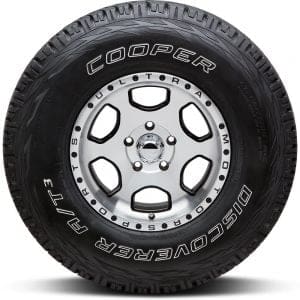
- The Open-tread design on the all-terrain improves the traction of the tires on the off-road surface and as well as adequate handling on paved roads.
- They are usually more aggressive tires made for heavier trucks and more off-road use with Reinforced sidewalls present on some models to help to provide more load-carrying capacity.
- As all-terrain tires are considered all-purpose, they also provide traction on snowy or icy surfaces. But the tires are less noisy than regular tires due to the tread design.
- All-terrain tires are made of softer rubber which leads to a shorter tread life; though such compounds help all-terrain tires provide adequate performance on all surfaces. They are more long-lasting models of tires with a mileage of 50,000-70,000, and it isn’t lower than the average of 40,000 miles.
- They are less expensive.
Mud Terrain Tires
For vehicles which are more off-road than on-road, mud tires (MT) are valuable. The tread patterns are aggressive and have larger lugs.
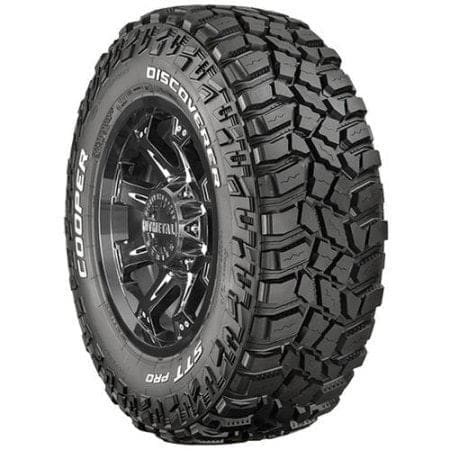
- Mud tires mostly come with deep ridges that increase traction on the road in harsh conditions. Mud Tires also consist of rubber which remains flexible in the cold to maintain traction in colder temperatures.
- Mud Tires feature large tread blocks and wide, deep voids between them to get the best on off-road surfaces. These voids help the tire clear mud, gravel, and debris as it spins, ensuring that there will be a fresh surface to grip.
- Most mud-terrain tires use heavy-duty construction methods that include rough, heavy, thicker, and more numerous sidewall plies. With heavier sidewalls, MT’s can also have clumsy handling qualities, and the reinforcement can make for a firm ride.
Snow tires
For vehicles that are driven on snowy, off-road terrains, quality snow tires are necessary. When the temperatures are negative, they can stay soft and pliant. They have a lot of groves and channels which enable them to bite into snow and wet ice for better traction.
Jeep Link: Do you tow with your Jeep? If so, check out our Jeep Towing Capacity guide
Plan your Budget
Cost is a huge factor in upgrading or replacing your tires. Understand that going up in size from your factory sizing impacts many components of your vehicle and prices start to escalate.
As a general ballpark estimation, AT-style tires seem to run about $200 each or ~$1000 a set whereas MT style tires typically run upwards of 250 or $1250 a set. (these prices only seem to go up these days)
Some of the standard costs factored in with new tires:
- spare tire (5 wheels)
- shipping charges
- taxes
- disposal fees
- balancing and mounting of the tires
- transfer of the TPM sensor(s)
When going to a larger tire size, you may have more costs such as:
- steering components
- drive shaft replacement
- muffler mounts/relocation
- new rims
- lift kit
- body leveling kit
- re-gearing
- new or trimmed bumpers
Choosing tire Size
The most important thing to know when choosing your tire sizes is that there are trade-offs with everything you do. Not only trade-offs in tire type but size and fitment as well as vehicle gearing and configuration.
Lift
Those 35″ or larger tires look like monsters and give you higher ground clearance, However, going for larger tires means other mods may be necessary to your vehicle for them to fit properly and ride safely.
On many off-road vehicles, you can get up to 33″ tires or so before you must investigate a lift kit or body leveling kit. Going to 35″ or large tires in addition to a lift kit you may be required to remove your fenders, so your tires don’t rub.
Power Band
Besides the clearance, taller tires will bring change to your power band. In simple terms, you will be running at a lower RPM at any speed when your tires are tall. Additionally, based on the current axle gear ratio, tall tires might cause the engine to bog down.
An out of balance gear ratio reduces the performance of the vehicle off-road as well as on the road and reduces fuel efficiency too. You may find yourself using your clutch excessively and feeling underpowered.
Gearing
To calculate your optimum gearing take your tire size and calculate the overall diameter using the following formula:
(CROSS SECTION WIDTH x 0.ASPECT RATIO x 2 ÷ 25.4) + WHEEL DIAMETER = OVERALL TIRE DIAMETER
Example: 255/75 R-17 (255 x 0.75 x 2 ÷ 25.4) + 17 = 32.059 diameter.
For optimal power band, multiply the diameter * .12
On a 32″ diameter wheel a 3.88 gear ratio would have you in maximum power, MPG and torque range.
With a 35″ tire that would be 35*.12 ~ 4.2 gearing or the standard 4.11 or 4.27 gearing set for optimal power
The larger the tire diameter, the larger the gearing you need for optimal power.
Understanding tire sizing
On wranglers a factory tire is 255 75 R 17, that means it’s 255mm wide, the ratio of height to width is 75% (so it will be191.25mm high, on the rim). The letters indicate it’s a (R)adial tire. Finally, the rim to which it fits is 17″ in diameter. Each model may vary slightly with factory options or model specific sizes, so always check with your installer to make sure everything fits.
Tire size jeep fitment table
| Wheel Size | Spacer Required | Lift Recommended |
| 33″ | N/A – | N/A |
| 35″ | Factory Wheel (Y) | Aftermarket Leveling kit or 2″ lift |
| 37″+ | Not Recommended | 3.5″ Lift |
Going BIG!
If you’re sticking with factory sizes or fitting in up to 33″ tires, they should fit on your vehicle. There may be some rubbing at extreme articulation (such as when using sway bar quick disconnects) of which a spacer may fix this. For 35″ or larger wheels, you’re going to want new rims with correct spacing and a lift kit or leveling kit to give you the clearance you need.
For better fitment of 33″ tires, a leveling kit which raises your body about an inch and gets rid of the factory rake may give you all the room you need to fit the tires without changing the vehicle too much. A leveling kit may only run you $150 in parts and $300 installed (or just a few beers shared with your friends).
For 35″ tires, a two-inch lift kit provides necessary clearance without changing your vehicle’s geometry. You can go more substantial on your lift kit, but you may need to replace drive shafts, move brake lines, and modify more components on your vehicle the more significant the lift is.
As you can now understand, costs go up exponentially when you start looking at larger tires and larger lifts.
Matching Rims and Wheels
With any change in tire size, you must have matching rims. If you wish to maintain current rims that often come with a stock vehicle and go to a larger tire you may be able to add spacers to fit these tires on your vehicle and have correct clearance. Factory rims will be limiting in your tire options, so it’s common to buy new rims and to match wheelsets when shopping for larger sizes.
There are a ton of options & varieties amongst wheel choices and tire choices, but you can choose from Steel vs. Alloy materials.
Steel Rims
Priced slightly more affordable – Good basic looks. Exceptionally durable and if you’re out on the trails a lot a wheel that can take abuse and not worry about looks. No one is going to care if their steel wheels got a little scratched.
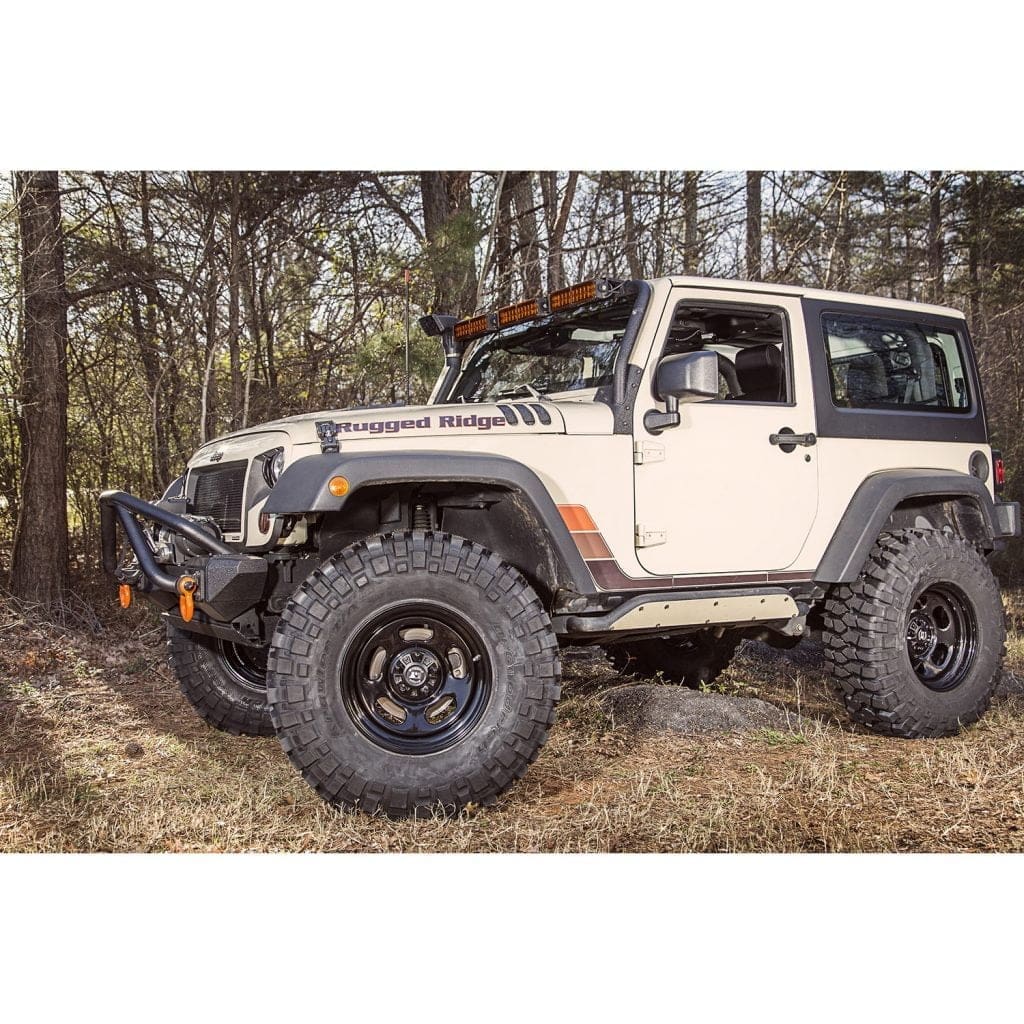
More expensive than steel wheels, fancier designs options. Damaging these wheels is often damaging the looks you’re paying for.
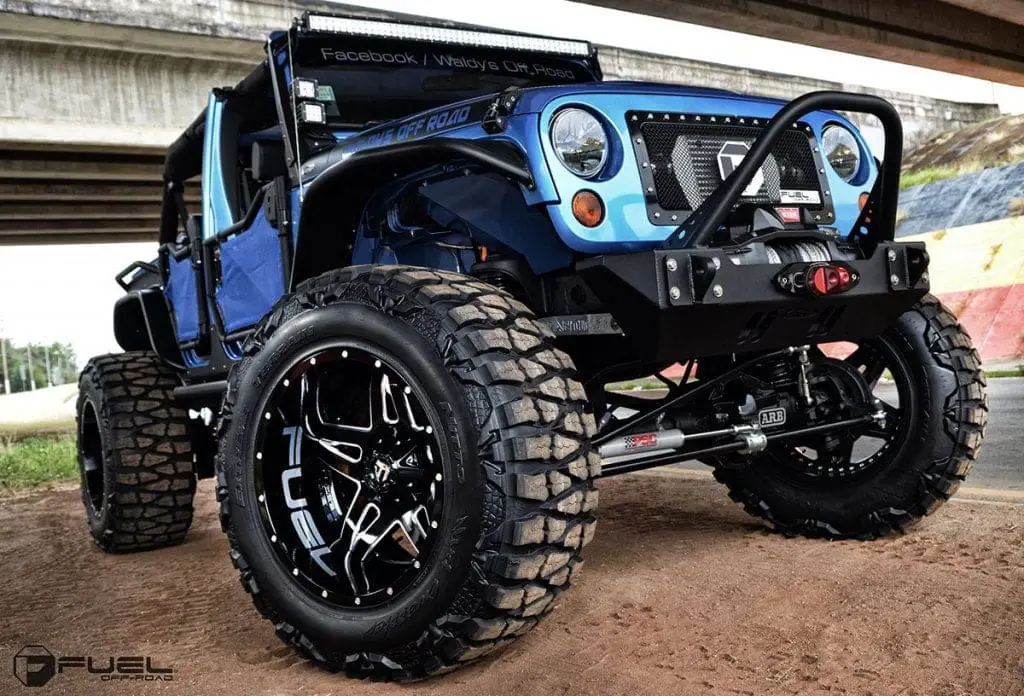
Bead lock Rims
If you’re going for aggressive rock crawling and dropping to low air pressures, a “bead lock” rim system may be advisable. This is a mechanical device that locks the bead against the rim to diminish the risk of tire wall separation during extreme off road or rock crawling at low tire pressures. Be careful; some bead lock setups are just entirely for looks.
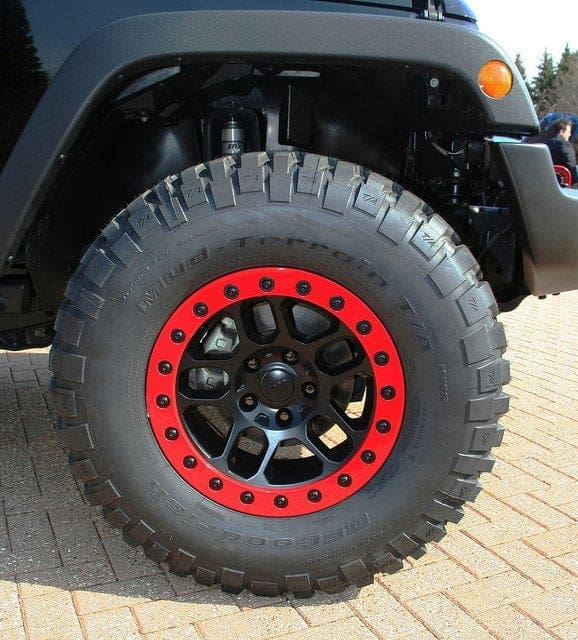
Factory Rim options
If you want to keep your factory rims and increase wheel size, you may need to invest in spacers to adjust the backspacing of your wheel so that it cannot bump on turn and articulation against your frame, body, and steering components.
Backspacing & Spacers
Wheel backspacing is the distance between the inside lip of the tire to the hub mounting surfacing. Where wider and larger tires are involved, the backspacing should be reduced to move the tire outwards on the vehicle.
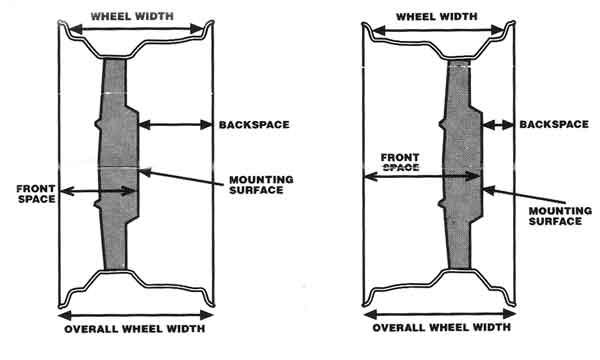
The Jeep in the following image used spacers to get the clearance needed for the larger tire on the factory rims.
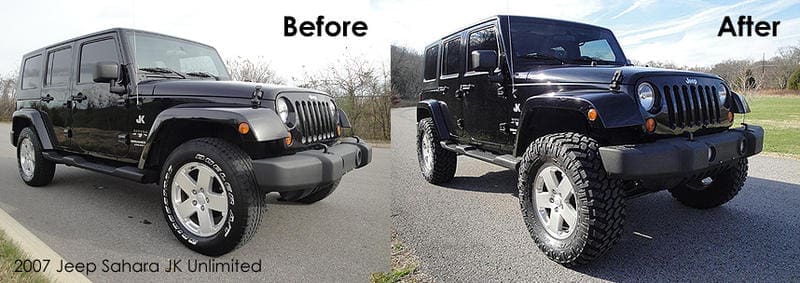
It may be more affordable in the long run (and allow you more capability or more tire options) to get Steel Rims at the right size than to invest in spacers for your factory rims. It can cost ~ $200 to add spacers whereas a new set of steel rims not requiring spacers may cost just that much.
Jeep Tire shopping tips
After determining what your tire mission is, do some research. There is no shortage of local Jeep communities across the world, and many are on Meetup.com or Facebook groups.
Tires change year in, year out and even within the same brands some tires may not be what they were the year before. While shopping around, be sure to read the reviews and balance your decisions against your goals.
Price comparisons
Tire prices are not standardized, and every manufacturer and retailer is free to set his or her prices. Prices vary significantly between manufacturers and retail outlets. Shop around by calling local installers, dealers, and tire companies.
If you’re looking at moving to 37″ tires, re-gearing to 4.22 gears, and adding a 2.5+ inch lift you’re going to want to find a shop that has experience and knows what other modifications your vehicle may need.
Price isn’t the only thing you want to keep in mind; your Jeep is useless if it has “death wobble” or is unsafe to drive or has a miserable power band for the driving you do.
Sell your old tires
Facebook Marketplace and craigslist are decent areas to try and sell your tires. If you can’t sell them and want to clear garage space, offer them up in a local Jeep meetup group and see if people will take them off your hands.
The Jeep parts market is saturated with factory wheels and rims so don’t expect to save too much money by selling your old factory sets.
Safety Considerations
Everything has a trade-off. When your vehicle comes from the factory, FCA has decided what types of tires, wheels, and spacing have made the most sense for their typical drivers and expected driving conditions. Once you alter anything about your vehicle, you should understand possible outcomes that may impact the safety and handling of your vehicle.
Re-gearing
If you don’t re-gear and you move to a drastically larger wheel size, please be aware of the potential loss of power and performance of your vehicle as well as the reduced fuel efficiency.
Tramlining
Tramlining refers to the tendency of a vehicle to follow the surface contours while in operation. The intervention of the driver does not offer significant help. The tire technical aspects will affect the behavior though.
Factors that worsen tramlining
- Tires with deep tread patterns, like off-road tires, are less likely to be affected.
- With wide tread comes better grip which means more tramline
- When wheelbase is the same as the distance between same axle wheels. With a bigger wheelbase, the tire sensitivity goes up.
Wear and tear
Getting the best off-road tires does not mean they will not wear or tear even when misused. You need to practice proper maintenance for the tires to serve you for a long time.
- Rotate your tires – including your spare.
- Check tire pressure. If you’re off-roading and drop PSI be sure to air up before hit road speeds.
- Monitor condition – Cracking, losing tread or dry tires, or any pinch bubbles? Time to replace!
Wrap Up
If you’re new to Jeeping, don’t rush. Take your Jeep out on a trail and experience factory conditions. If you’re dead set on having large tires and a big lift, try and locate a vehicle already geared for such configuration.
Upgrading or replacing your tires is a wonderful way to make your jeep “Yours.” We love reader feedback, let us know what types of tires and setup you went with and if you have any advice for our readers.

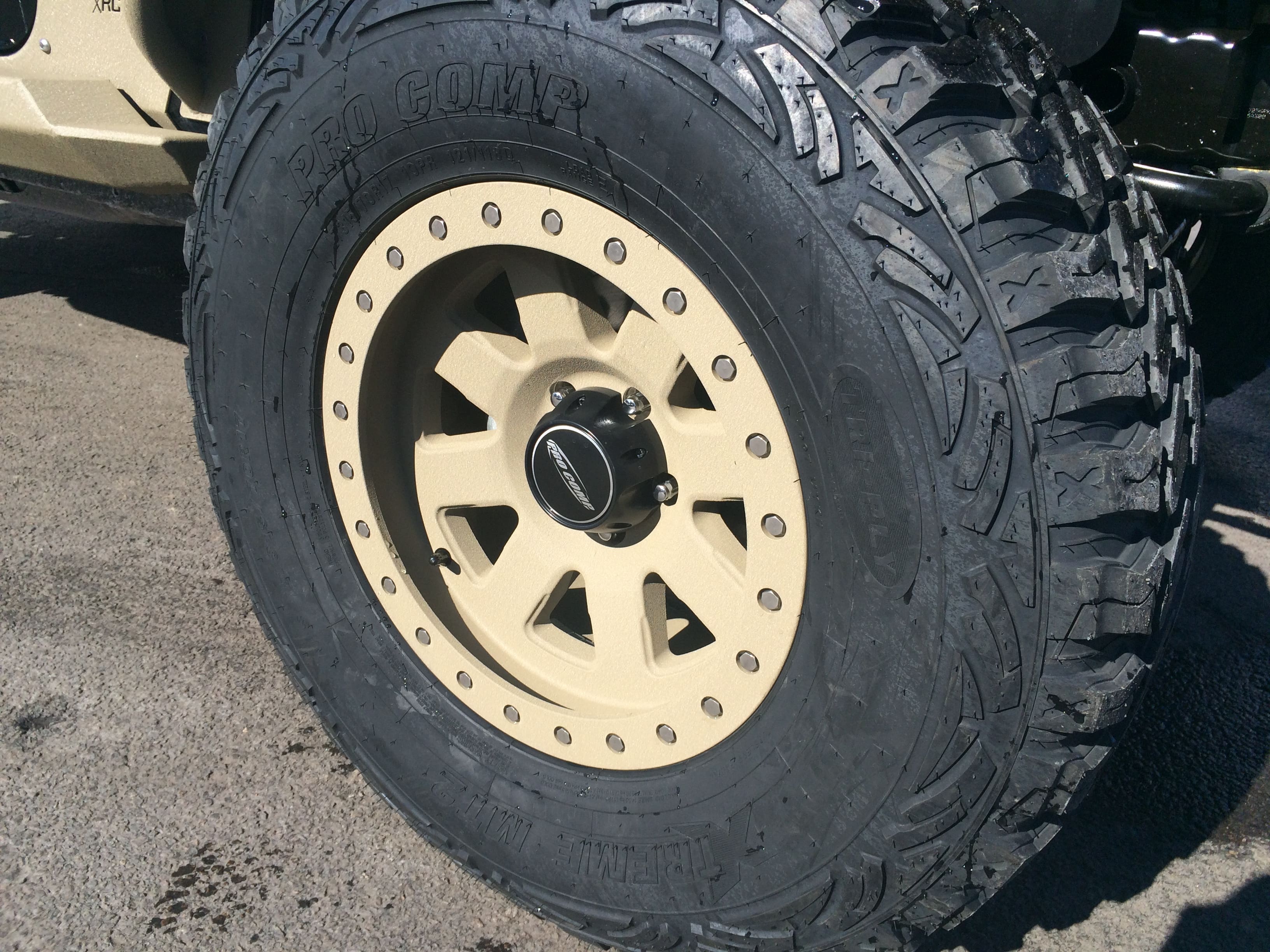
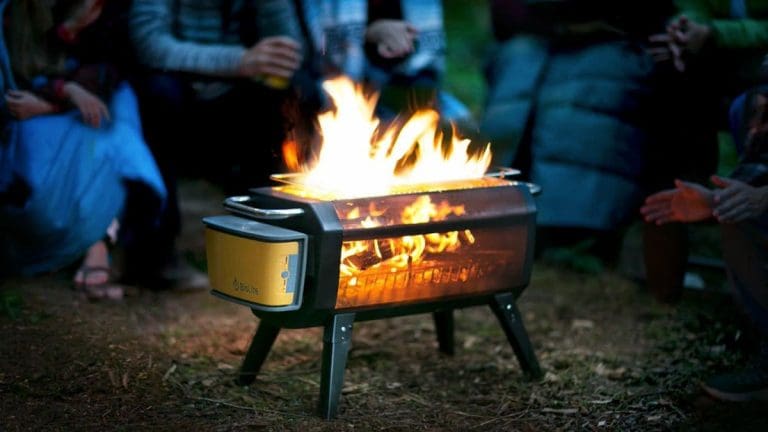
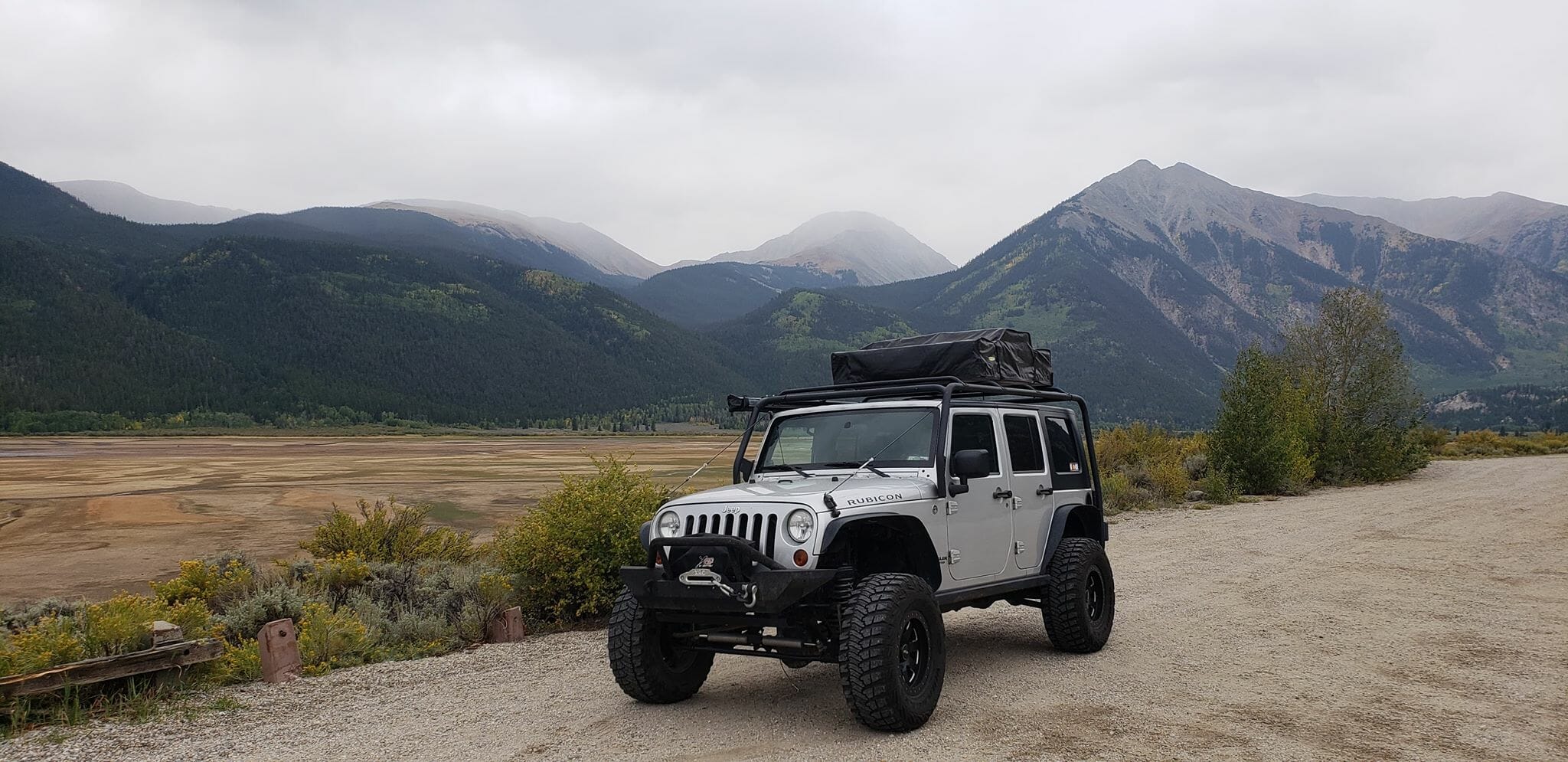
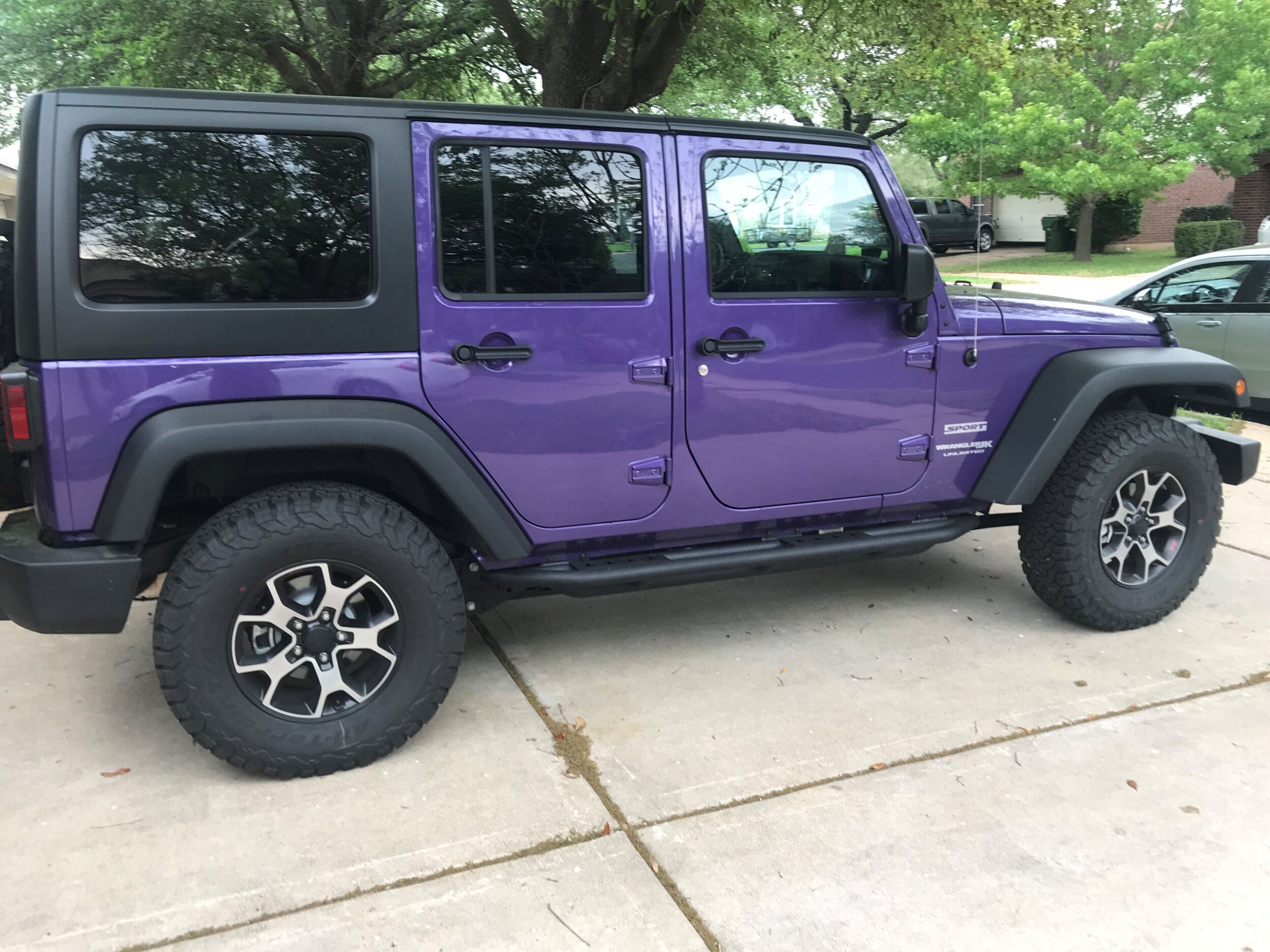
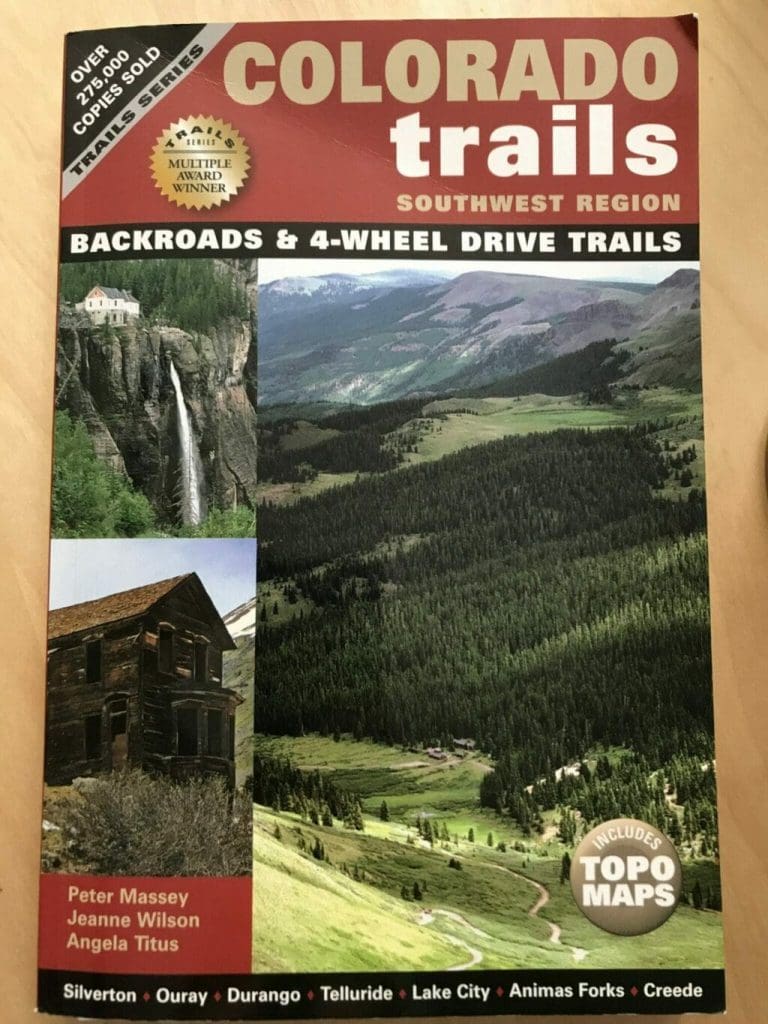
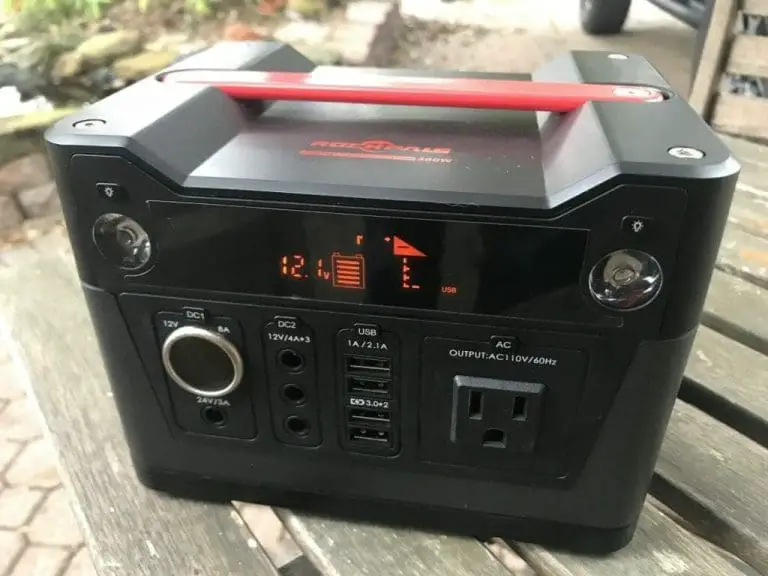
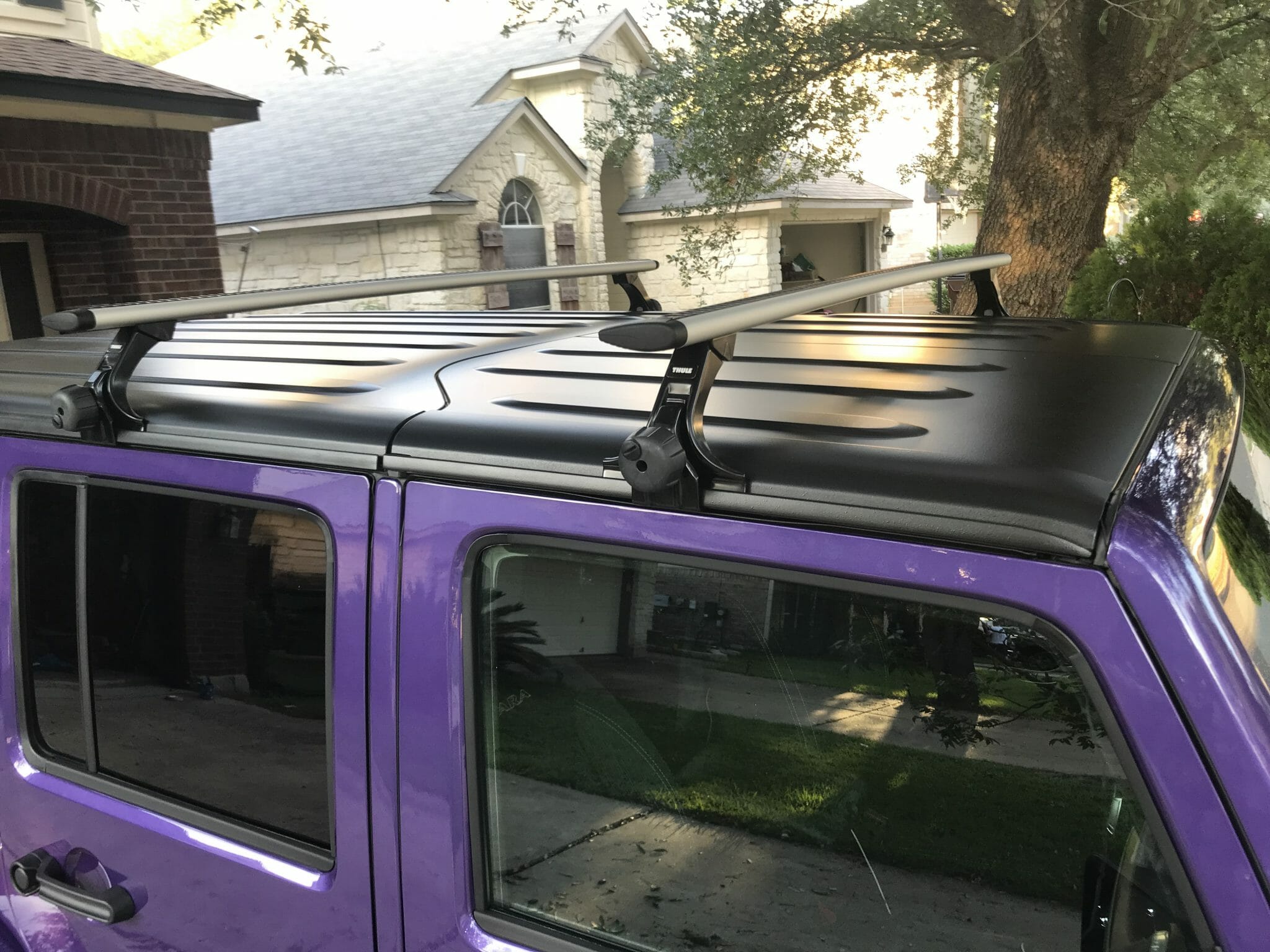
Thanks this was super helpful